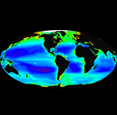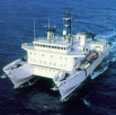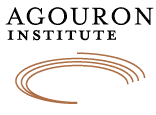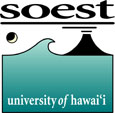| |
 |
|
The highlights of the course were two one-week cruises aboard the R/V
Kilo Moana. These cruises provided students with a first hand
look at modern oceanographic techniques. In addition, teams of students
conducted a series of experiments using the tools and concepts
covered in the daily labs and lectures. The cruises were designed
to expose students to a broad array of instruments and methods available
to oceanographers for sensing microbes in the sea. Several of the
course faculty participated in the cruises, providing instruction
and guidance in hypotheses testing, sampling, and experimental design.
|
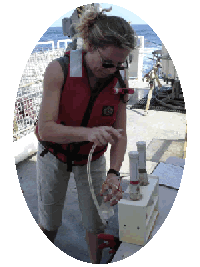 |
While at sea, students shared cabins. All linens were provided
on the research vessel. In addition, three daily meals were served
at sea. Although the R/V Kilo Moana is renowned for its stability
at sea, students prone to seasickness or those unsure if they get
seasick were advised plan to bring appropriate medication. Students are also advised to plan to bring
a pair of closed-toed shoes that could get wet to wear while sampling
and working on the ship, and to bring another pair
of shoes or sandals (that don’t get wet) to wear around the
ship when not working.
|
 |
Experiments at Sea:
- In situ incubations
- Photosynthesis and optics
- Particulate matter concentration
- Nutrient concentration
|
UH Labs
- Primary production
- Nutrient analyses
- Respiration
- Bacterial production
- Flow cytometry
- Microscopy
- ATP concentration
|
- Chlorophyll concentration
- DNA/RNA extraction
- PCR
- Cloning
- Screening
- Bioinformatics
- Modeling
|
Last updated Mon 09 Apr 07.
|


